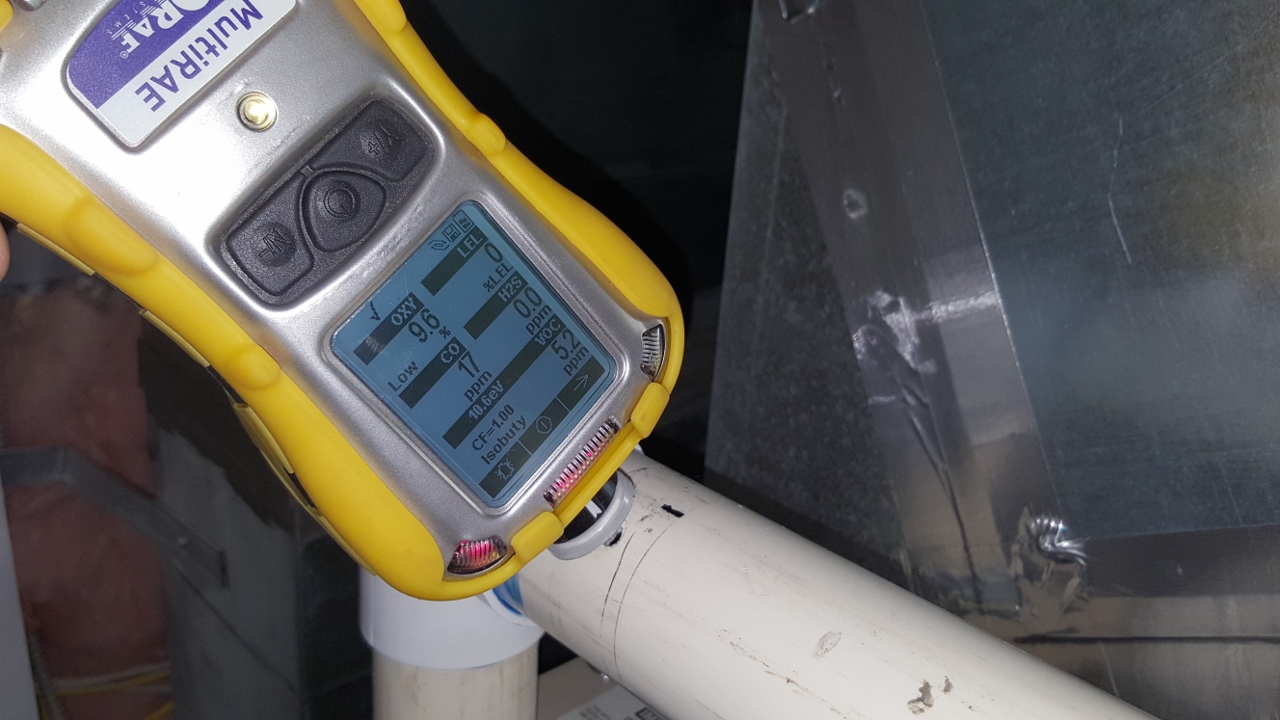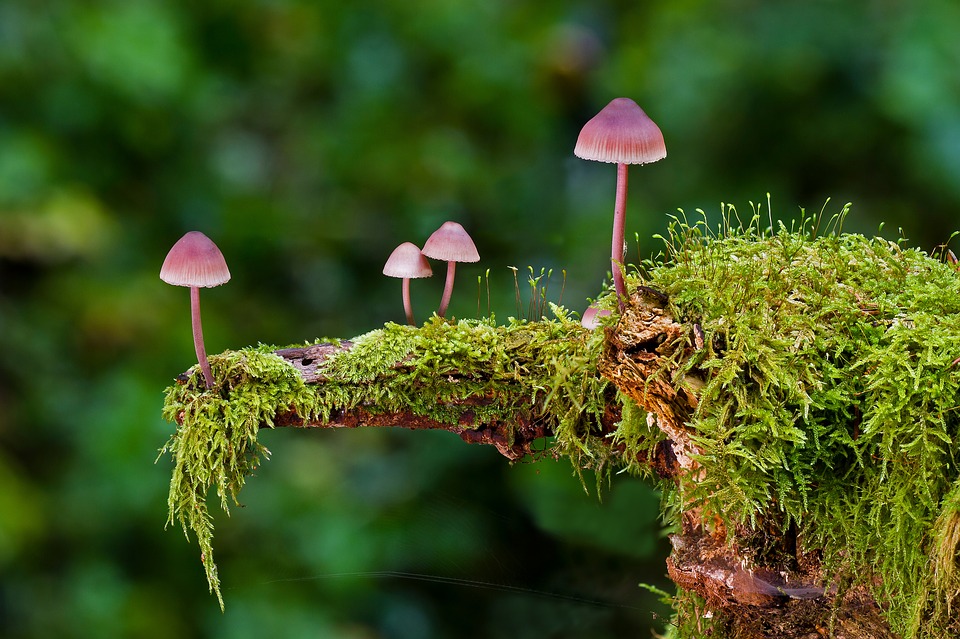Where there’s moisture, there’s mold. That’s why, in the Pacific Northwest and other damp climates, mold is so prevalent. We have this fungus to thank for things like cheese and penicillin, but it’s not something most of us want in our homes, schools, or workplaces.
While some mold is relatively harmless, other species have cause serious health implications for you and your family. From your coffee maker to your basement, you may find mold where you least expect it. Whether you’re worried about mold in your home or you have no idea whether or not you’re at risk, here are some must know facts about the dangers of mold and preventing it.
Where there is water, there can also be mold
From window panes, to fans, to carpets, your home, unfortunately, can be a hub for mold. Humid spaces and those frequently exposed to water are the most likely to foster mold, as it grows in damp, dank environments. The most common health consequences from mold in your home are exhibiting cold and allergy symptoms, but more serious illnesses such as infection can occur in people with asthma or compromised immune systems.
To prevent mold growth in your home, it’s important to address any leaks right away to avoid prolonged exposure to moisture. Its also helpful to avoid putting carpets in bathrooms, kitchens, basements, and other places that are often damp or susceptible to water.

Tile is an excellent flooring material choice for preventing mold in your space.
You may also find mold in your yard and outdoor spaces
Mold can also grow on outdoor decks, furniture, and even on your lawn. If your deck, patio, or outdoor furniture is frequently exposed to rain or water, it’s at risk for mold damage. Keeping an eye out for mold in these areas and catching it in the early stages is the best way to keep it from turning into a serious problem.
Decaying wood is also a target for mold growth, so it’s important to monitor and address early (see below, structural damage). Mold can also grow in your yard if you have build up of decaying plants, although this type of mold typically won’t do much harm and is easy to get rid of.
Mold might be where you least expect it
Sinks, bathrooms, and other areas in your home frequently exposed to water are common places to find mold. Several other areas in your home, however, may be hiding mold you cannot see. In a 2011 study by the National Science Foundation, they named toothbrush holders, pet bowls, coffee makers, and pet toys among common places to household find germs and mold.
No one wants a side of mold with their morning coffee, so regularly cleaning and drying your coffee maker is a good way to prevent this. Being aware of these household items as potential mold-hubs and being sure to clean them from time to time is an easy way to prevent mold from spreading throughout your home and causing bigger problems.

Are your animal’s toys infested with mold?
Control the moisture, not the mold
Once there is mold in your home, it can be difficult to get rid of. Chemical solutions can get rid of mold, but being proactive is often the best solution. Some ways to do this include:
- Fixing leaks as soon as they arise
- Quickly cleaning up any spills, especially on your carpet or in areas such as your attic and basement, will also help prevent the problem
- Keeping humidity levels low
- Cleaning bathrooms with products that kill mold
- Washing or replacing any carpets and fabrics that have been exposed to water.
Humidity leads to mold
Mold species are also prone to growing in humid environments. There are several easy ways to make small changes that will lead to big results in terms of humidity reduction. These include:
- Venting bathrooms and other places within your home that generate moisture to the outside
- Using air conditioners and dehumidifiers
- Using fans when cooking and showering
You can mediate mold in your workplace
If you work in an old work building, or even a new one, you may also be at risk for mold exposure. Your office air quality can take a toll on your health, so being proactive about this issue can keep your team happy and healthy. Best practices to implement in your office include:
- Installing dehumidifiers
- Fixing any plumbing issues right away
- Furniture can also be a mold target. Assessing older pieces of furniture and replacing them is another easy fix to reduce mold and mildew and therefore your team’s exposure to allergens from mold.
- Cleaning up spills after they happen
Mold may be affecting your children’s’ health at school
While some schools may be newly renovated and home to state of the art buildings, many are not. Older buildings can be hubs for mold and other contaminants such as lead and asbestos. If your child spends seven hours a day in a moldy building it can put their health at risk.
Reducing indoor humidity, being proactive about signs of mold and leaks, and paying close attention to floor and carpet cleaning can help mitigate these problems. While you probably don’t have time to be analyzing the mold potential of your third grader’s classroom carpet, touching base with your child’s school about the potential for mold within their buildings can mitigate health consequences down the road for your child and their classmates. Removing carpets from underneath areas near water in schools such as water fountains and classroom sinks can also reduce the risk of mold growth.

Is mold affecting your child’s health at school?
Mold is a big trigger for asthma and allergies
If you or a family member has year-round allergies, mold may be the culprit. While pollens cannot survive winter freeze, many species of mold are dormant during the winter, but will continue to affect allergies when the weather warms up.
Allergies cannot be cured, but limiting your exposure to mold outdoors and installing high-quality air filtration systems in your home can reduce your symptoms and exposure.
Asthma is a disease that affects the airways in and out of your lungs. Mold, pollen, pet dander and many other things can cause these sensitive areas to become irritated. Asthma can be controlled and managed by minimizing your exposure to triggers, recognizing early symptoms, and taking medication when necessary.
Not all mold is visible
While some mold is easy to spot, not all mold is visible to the naked eye. These types of mold can also have serious health consequences for those exposed to them.
Trouble breathing, itchy eyes, sinus troubles, and intestinal issues are common signs of exposure to invisible mold. If you suspect you have invisible mold in your home, you should contact an expert.
Mold in low-traffic areas can also affect health within your household or workplace. This includes attics, ceilings, air vents, and other spaces in your home that you do not spend much time but that air circulates through. Taking the time to inspect these areas can mitigate health consequences down the road.
Not all molds are created equal
We’re all about equality, but when it comes to mold, there are many differences between the mold on your sandwich and the mold on your ceiling.
The black, slimy mold that you can often find near the sink can produce toxins closely tied to allergies and illness. You’ll often find mold on your bread partially because mold are partial to the ingredients of bread, and partially because bread is often kept in warm areas of your home rather than in the refrigerator. Accidentally eating bread with a little mold probably won’t hurt you unless you have a compromised immune system, but it might make you feel nauseous. You can prevent mold on your bread by storing it in a tightly sealed area, or freezing partial loaves and later thawing it to avoid leaving it outside for too long.
If you find mold in your food, you should also check other foods stored in the same area, as mold spreads very quickly from one place to another.

Mold can cause structural damage
Mold can be not only dangerous to your the people living in your home, but it can also pose a threat to your house’s structural integrity. Though mold has to be growing uncontrolled for a long time to cause a problem, it is possible for it to weaken floorboards and walls by consuming damp or damaged wood.
Places such as basements, attics, crawl spaces, and other areas in your home prone to damp environments are the most likely to be at risk. Be sure to frequently inspect these areas for signs of moisture and mold, or contact a professional if you suspect this type of damage.
Finally, wood during the building process or home renovations can also be target to mold as these woods aren’t always kept in dry places. It’s important to protect construction materials to avoid building with damaged materials.
Mold, yeast, and mushrooms are cousins (and they could be reproducing in your airstream)
Mold, yeast, and mushrooms come from similar origins and are all species of fungi. For a quick review from high school biology, fungi reproduce using spores, which means they produce microscopic seed-like compounds to reproduce.
Because they become airborne in order to reproduce, spores from mold can get into your air vents and cause allergies, asthma and other health problems.
Mold is a multicellular organism, while yeast grows as a single cell. While mold can only grow in damp, dark or humid places, yeast can grow in many places including in fruit, in your stomach and on your skin. Mushrooms are also multicellular and can be found in the forest, on the barks of many trees, and in your chicken marsala.

Toxic black mold is less toxic than you think
“Toxic black mold” refers to multiple subspecies of molds called Stachybotrys Chartarum. This type of mold has been proven to generate mycotoxins. While these toxins have shown negative health effects in some species of animals, they are not proven to harm humans.
Some companies will try to up-sell you on expensive mold removal services. Instead of trying to sell you on costly services you may not need, Hawk Environmental believes in solving these problems with practical and professional, scientific based information.
Once we find the source of the mold, then we’ll move ahead with treatment, but there’s no need to pay for costly services that don’t have much benefit. If you are concerned about mold in your home, or think you may be getting sold with scare-tactics, feel free to contact Hawk Environmental today.
If you’re concerned about mold, schedule an assessment
If you’re worried about mold in your home, office, school, or anywhere else, it’s better to be safe than sorry. When you schedule a mold inspection with Hawk Environmental, you’ll get a team who not only treats the symptoms of mold in your home, but stops the problem at its source.
Our team will do a detailed investigation to identify both what’s causing the issue and how widespread it is. In order to address the issue, they first need to be thoroughly understood, and our team of experts uses scientific information and analysis to solve your problems.
These inspections include an evaluation of the property’s history, environmental data, visual inspections, sampling, photos of any problem areas, infrared inspection, moisture testing and more. To learn more about mold inspections or to schedule an assessment in your neighborhood, contact us today!
Images courtesy of Pexels.com.
Comments are closed.

